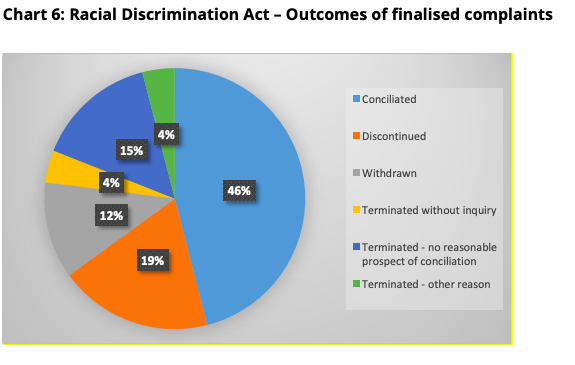How to be an Authentic Ally for Minority Groups at Work

At some point in our lives, we all have most likely experienced having or needing an ally. When you were at school, did a teacher ever get you in trouble for something you didn’t do? Were your siblings ever guilty of picking on you?
Or were you ever targeted for having different interests than others? All of these experiences are times where you might have wanted someone to step in and stand up for what’s right.
There are countless ways to be an authentic ally in the workplace. It can be as simple as reaching out and showing interest in another individual. Sometimes it’s about encouraging a person to keep reaching their career goals or providing opportunities for them to grow. Fostering an inclusive workplace can significantly boost team morale and productivity. For more tips, check out this guide on creating an inclusive workplace.
Most importantly, it can mean taking a stand against any discriminatory or oppressive behaviour. We all have our own unique values, interests and opinions that we want people to be able to respect and stand up for.
But for this to be possible, we need to actively learn and understand how to stand up for theirs. If we hope to develop strong networks and relations, we must learn how to be authentic allies for one another’s groups. To truly achieve gender and racial equality in the workplace, it is essential to understand and address the challenges that hold us back.
If we want to make actionable changes to the systemic inequalities in our world today, we must learn how to work and fight together.
So what exactly is an ‘authentic ally’?
In a nutshell, an authentic ally is anyone who actively supports, encourages, empowers and stands up for an individual or group of people. The term ‘ally’ can also be used as a verb, meaning to ‘join forces with’. In other words, it’s one that requires action.
In the workplace, allies can be leaders, managers or employees who acknowledge, respect and value differences. For HR leaders, being an effective and authentic ally means more than one single act of solidarity. It means taking the long road to understanding and empathising with the various inequalities crippling our society. It’s crucial to bring diversity and inclusion into boardroom discussions to ensure that these values permeate all levels of the organisation.
How to be an ally in the workplace
For anyone wishing to be an ally, it’s important to learn how to unlearn subconscious biases within you and in others. Australia is one of the most multicultural countries in the world, in fact our 2016 census revealed 26% of Australians were born overseas.
To support, empower and unify Australia’s diverse communities, we need to learn how to support one another. For underrepresented minority groups, it is critical we help raise their voices and stand together as one.
If you’re interested in learning how to be an authentic ally for minority groups in your workplace, we’ve compiled a short list with some useful tips below.
1. Have an understanding of the term ‘privilege’
It’s human nature to react defensively when someone points out privileged behaviour. After all, the word unfortunately has a series of negative connotations attached. However, defensiveness often comes from a limited understanding of what the word actually means.
Being ‘privileged’ does not mean you’re rolling in riches and looking down at those beneath you. It does not mean you’ve had a simple life with everything you could ever want at your feet.
Most importantly, it does not mean you’ve never struggled or worked hard. Put simply – privilege means that there are things in life you will not have to experience because of who you are, what you look like or where you’ve come from. Accepting privilege isn’t easy.
However, understanding the true definition will enable you to assist individuals or groups facing economic, educational, and environmental conditions that differ from yours.
2. Be aware of bias and learn how to unlearn
Workplace culture is difficult to change overnight. Despite whether your business is considered inclusive, underrepresented employees may still experience marginalisation and discrimination throughout the industry. This can have a significant impact on their sense of self-worth and can limit future career growth.
To aid in building a more inclusive culture, we can start by addressing our own behaviours and biases to make a greater effort to support minorities. Dwelling deep in the subconscious, internal bias differs from known biases and injustices, as individuals are often unaware of their existence.
These attitudes and behaviours can only be accessed through introspection.
Unfortunately, biases form at the individual, organisational and societal levels. They’re often ingrained from a young age as we absorb certain media, language and behaviours that impact how we view the world around us.
For HR leaders, it involves analysing and challenging the various inequalities at play within your own organisation, whether these are cultural or gender-based. Being able to challenge unconscious bias at the recruitment, hiring and career development levels is essential for providing equal opportunity to minority groups.
3. Steer clear of tokenism
Every business and HR team will have their own authentic response to D&I initiatives. It’s all about finding that perfect balance for your team so everyone regardless of their background, feels valued. That being said, people can easily see through behaviour that’s used to enhance a business’s diversity profile.
Tokenism often occurs when an employee has been hired to represent an underrepresented community.
However, this misguided approach merely gives the appearance of equality, without actually achieving it. Tokenism is highly counterproductive when building an equitable, diverse and inclusive workplace culture. If you want to prevent tokenism from occurring within your own organisation, you must ensure you have diversity with inclusion. Fostering a culture that nurtures more women into leadership roles can also help combat tokenism and create a more genuinely inclusive environment.
4. Learn to speak up but not over
If you see any untoward behaviour directed at a person or group by another, it’s crucial to call out such conduct. By doing so, you can ensure that kind of behaviour is not tolerated in the workplace. When issues of discrimination, harassment or marginalisation confront us, we often feel our actions are limited to our own.
However, allies see it as their job to stop others from displaying these behaviours. While it’s important to help amplify underrepresented voices, it’s equally as important to provide an opportunity for those voices to share their own experiences, thoughts and feelings.
5. Create more inclusive work practices
Siloed meetings can be common pitfalls for businesses wishing to enhance their D&I. It comes down to who facilitates the meeting and whether they provide opportunities for everyone to have their say.
Meetings are incredibly important to a company’s culture. They serve as a forum for teams to come together and discuss goals and ideas, to make decisions and plan for the future. Meetings are where culture flourishes.
So it stands to reason that if you want to help amplify the voices of minority groups and ensure they are heard – then meetings are one of the best areas to start. Emphasising the importance of inclusion before the meeting commences can help all members feel welcome and comfortable sharing their ideas.
Set clear meeting expectations so everyone is aware of what behaviour will and will not be tolerated. If someone is exhibiting aggressive or unfriendly behaviour towards another, be sure to call out or report the incident to HR.
6. Address microaggressions
No doubt we’ve all heard of a time where microaggressions (comments, remarks, actions or questions that hold a bias against minority groups) or outright discrimination has been swept under the table with minimal repercussions for the offenders.
In this situation, victims of bullying, harassment or discrimination are forced into isolation where they must learn to suffer in silence. This can have a severe impact on the levels of trust, engagement and retention within an organisation.
Outright discrimination can be extremely harmful to a person’s sense of identity, safety and security within a business. Although microaggressions are not as explicit, they can slowly build over time and cause more severe long-term damage.
It is the role of HR to clearly identify microaggressions and train staff to recognise and prevent such behaviour from occurring. By embedding a greater understanding of what microaggressions are and their impact, employees will feel more empowered to speak out against them. Supporting transgender employees in the workplace is another crucial aspect of creating a truly inclusive environment.
To foster an inclusive culture, businesses should implement a zero-tolerance policy for harassment, bullying and discrimination. Each policy should clearly articulate how they are enforced, and such matters are to be addressed. It’s important for leaders and HR to establish a clear line of reporting for victims and witnesses.
Provide a safe, judgement-free environment for people to communicate their experiences and reassure them that the matter will be dealt with accordingly. In the 2018-2019 Complaints Report from the Australian Human Rights Commission, 9% of reported cases were issues of racial discrimination including racial hatred.
Reporting discrimination can be a highly traumatic experience, especially when the victim feels they are putting themselves at further risk. In this instance, confidentiality is critical.

Source: Australian Human Rights Commission
7. Use inclusive language
Language is our most powerful communication tool as humans. When used effectively, it forms a mutual understanding. Unfortunately at the same time, language is capable of marginalising individuals and groups based on their gender, age, race, ethnicity, neurodiversity, physical ability and sexual orientation.
Your choice of words can also be the decider on whether someone feels included in a conversation, or not.
Inclusive language seeks to treat all people with the same level of dignity and respect. It is a mode of communication that is free from words or phrases that reflect stereotypical, prejudiced, or discriminatory views of a particular person or group.
If you want to be an authentic ally for minority groups, you must learn how to reflect on the implications of non-inclusive language. It involves making a conscious effort to adopt more inclusive words and phrases into your vocabulary, and encouraging others to do the same.
If you hear of anyone using offensive, discriminatory or non-inclusive language, alert them to the impact their words can have on others.
The wrap up
Being a visible role model within your business speaks volumes to your staff and customers. If they see you as a leader embodying what it means to be an authentic ally for minority groups, they too will be confronted by their own behaviour and internal biases.
Real progress starts at the individual level. It takes one person to make a conscious effort to support, empower and stand up for underrepresented communities. Over the last several weeks, D&I has received widespread media attention.
Across the globe, HR teams are being forced to re-evaluate their organisational culture. If we want to get serious about supporting D&I initiatives, it is time we all learnt how to be an authentic ally for minority groups.
Related Resources
-
 Read more: Guide to long service leave entitlements in Australia
Read more: Guide to long service leave entitlements in AustraliaGuide to long service leave entitlements in Australia
Understanding long service leave entitlements can be challenging. We share everything employers need to know about managing it.
-
 Read more: The $124,000 Cashflow Crunch: Small and Medium Businesses (SMBs) at risk under proposed Payday Super Requirements
Read more: The $124,000 Cashflow Crunch: Small and Medium Businesses (SMBs) at risk under proposed Payday Super RequirementsThe $124,000 Cashflow Crunch: Small and Medium Businesses (SMBs) at risk under proposed Payday Super Requirements
New Employment Hero modelling and research shows businesses will need an extra $124,000 in working capital on average to meet…
-
 Read more: From hiring mismatch to SmartMatch: 5 critical things your recruitment strategy is missing
Read more: From hiring mismatch to SmartMatch: 5 critical things your recruitment strategy is missingFrom hiring mismatch to SmartMatch: 5 critical things your recruitment strategy is missing
We’ve wrapped up five critical things your recruitment strategy might be missing so you can feel confident in your hiring…




















